Affiliate links on Android Authority may earn us a commission. Learn more.
Google Pixel 2 and Pixel 2 XL vs the competition
October 10, 2017
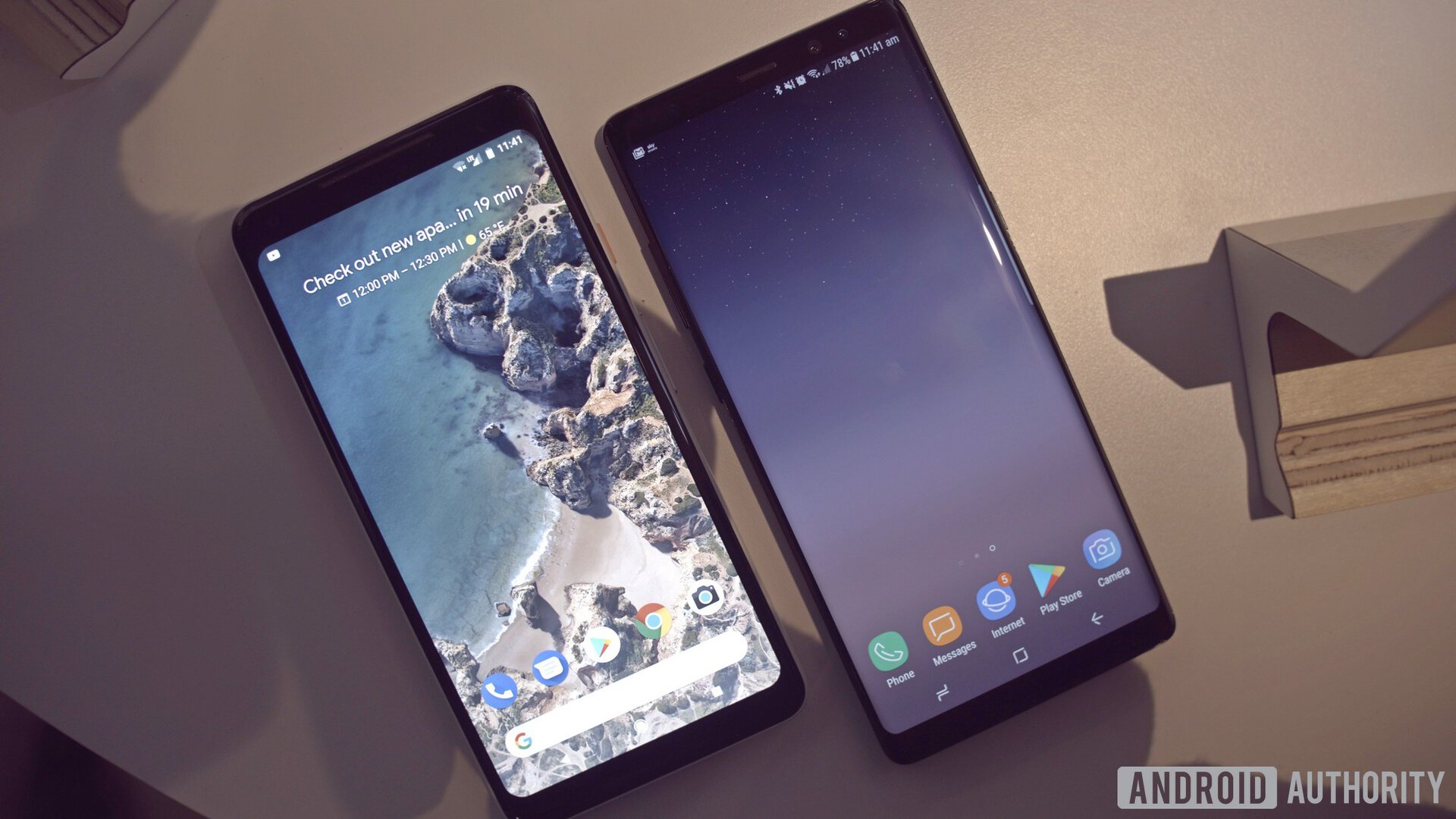
The Google Pixel 2 and Pixel 2 XL have a lot to offer. The two devices sport high-end specs, are resistant to water and dust, and come with a stock version of Android 8.0 Oreo. But how exactly do they stack up against the competition?
The Pixel series goes head to head with a number of flagship smartphones from companies like Samsung, LG, and Apple. A lot of them have similar terms of specs and features, but there are some notable differences between them that make each handset stand out.
Let’s take a look at how the new Pixel handsets compare with the Samsung Galaxy Note 8, LG V30, and iPhone X in terms of design, specs, price, and more.
Related: Is the Google Pixel 2’s screen-to-body ratio a big deal?
Just like its predecessor, the Pixel 2 XL has a very minimalist design. It sports an aluminum body with a glass window on the back that gives it a bit more character. It has very thin bezels around the display, making the large device a bit more compact and easier to use. You can get it in Just Black or the funky Black & White color option that has a black front, a black and white back, and an orange power button.
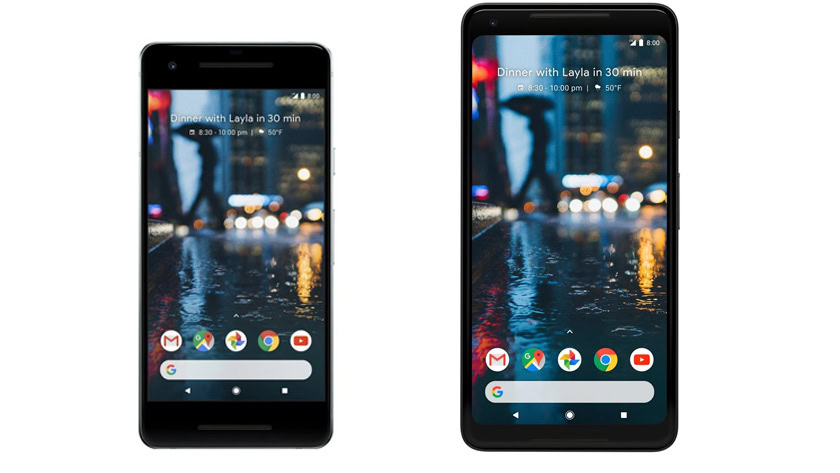
The Pixel 2’s back looks identical to that of its bigger brother, but its front is quite different. The phone has large bezels around the screen, making it look a bit dated when compared to its competition. In addition to Just Black, it also comes in the Clearly White and Kinda Blue color options.
The Galaxy Note 8, V30, and iPhone X also have a near-bezel-less design like the Pixel 2 XL. Additionally, Samsung’s phablet comes with a display that’s curved on the sides, while the iPhone X sports a notch on top that houses the camera and a few other sensors. The notch makes the device stand out from the majority of bezel-less devices on the market, although not necessarily in a good way.
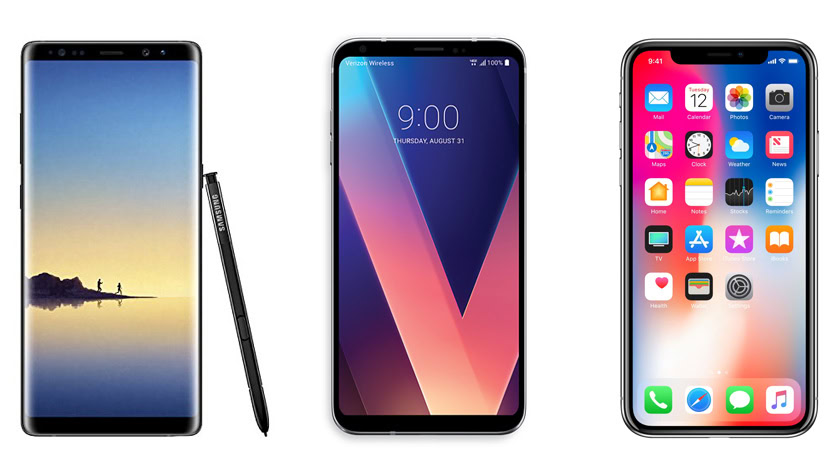
As is the case with the Galaxy S8, the Note 8 features a fingerprint scanner that’s oddly-positioned next to the camera. LG opted for a more standard approach by placing it below the dual-camera setup for easier access, while Apple decided to ditch it completely (more on that later).

Design is subjective, so it’s hard to come up with a winner in this department. Nevertheless, one could argue that the smaller Pixel 2 doesn’t look as good as the other four devices based on its large bezels. A lot of people also aren’t fans of the iPhone’s notch on top, while the Note 8’s curved display is actually quite popular among consumers. Unfortunately, we can’t say the same regarding the placement of the fingerprint scanner, which not only looks weird but seems impractical.
Which one looks the prettiest depends on who you ask, but in my opinion, the V30 is the winner here thanks to its modern, stylish, and elegant design.
In terms of specifications, let’s start by comparing the two Pixels. The smartphones are identical on the spec sheet, with just two exceptions: the XL model comes with a 6-inch pOLED display with QHD+ resolution and 3,520 mAh battery, while its smaller brother has a 5-inch AMOLED screen (1080p) and a 2,700 mAh battery.
The V30 has the same display as the Pixel XL in terms of size and resolution and also packs a 3,300 mAh battery, while the Note 8 sports the biggest one measuring 6.2-inches (Super AMOLED/QHD+ resolution) that stands out thanks to its curved edges. To stay on the safe side of things, Samsung decided to opt for a smaller battery this year at 3,300 mAh, based on what happened with the Note 7. Apple’s iPhone X also sports a larger 5.8-inch display (2,436 x 1,125 pixels) and comes with a 2,716 mAh battery.
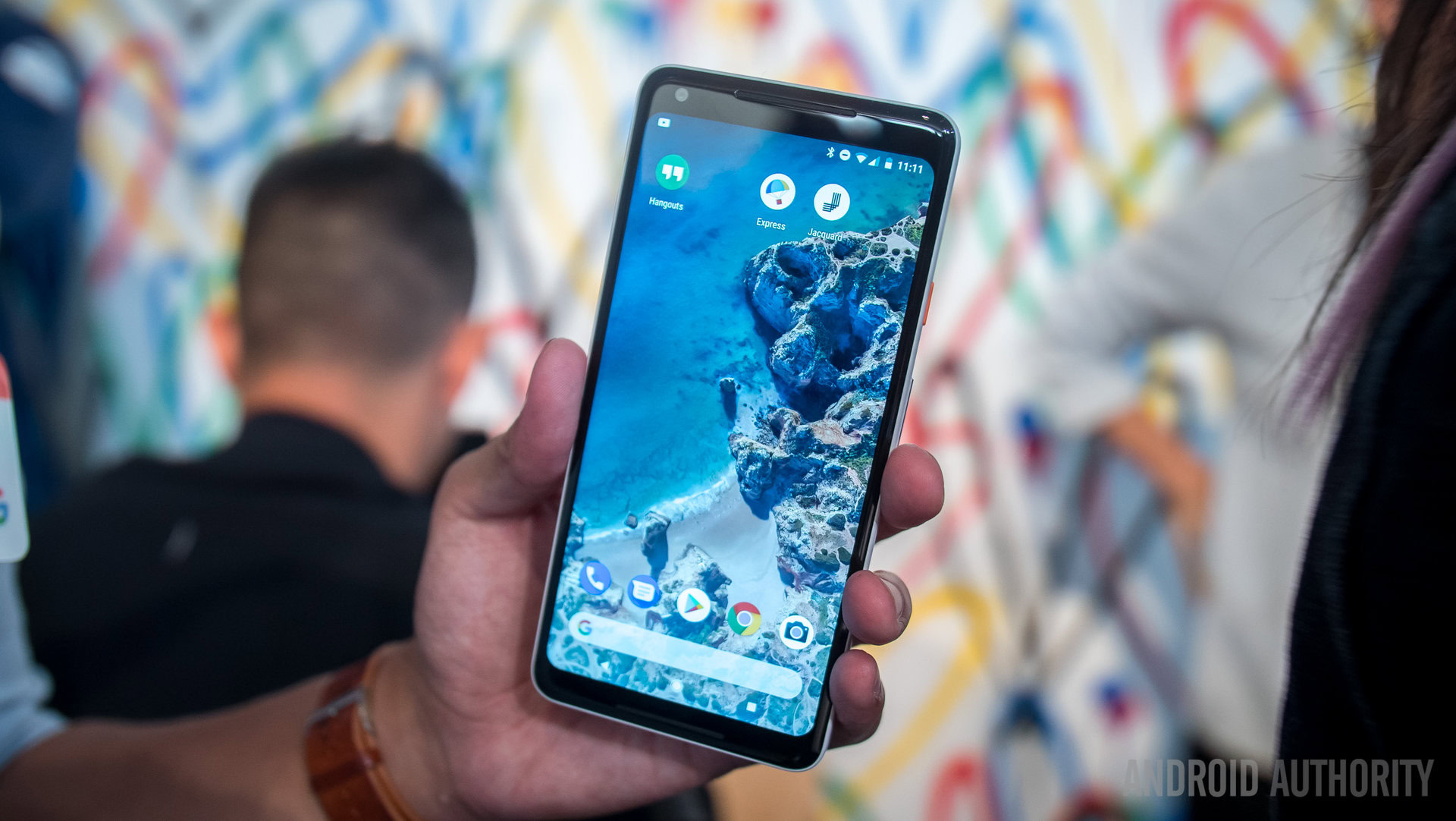
The Note 8 has the most power under the hood thanks to the Snapdragon 835 chipset and 6 GB of RAM. The Pixel devices and V30 are also powered by Qualcomm’s latest processor but have 4 GB of RAM, which is still more than enough these days. Apple’s flagship has even less RAM at 3 GB and comes with the A11 Bionic chipset under the hood. Nevertheless, the device is still powerful enough to handle just about anything you throw at it.
The Note 8 is Samsung’s first smartphone with a dual-camera setup. It features two 12 MP sensors allowing you to capture those fancy bokeh images and offers 2x optical zoom. The iPhone X has a similar camera setup as the Note 8 (two 12 MP sensors), whereas LG decided to equip its flagship with a standard and wide angle lens (16 MP + 13 MP).
The two Pixel smartphones might not have a dual-camera setup, but they still excel in the photography department.
The Pixels might not have a dual-camera setup, but they still excel in the photography department based on the latest data. The two devices have received a DxOMark score of 98 — the highest ever — putting them ahead of all the competition, at least according to DxOMark. They have a 12.2 MP sensor with an f/1.8 aperture, optical image stabilization, laser autofocus, and dual-LED flash. What’s interesting is that despite missing the second lens, you can still add the bokeh effect to images thanks to Google’s software.
In order to stand out from the crowd and offer something different than the competition, each smartphone is equipped with a few unique features. The Pixel devices have a stock version of Android that’s popular among a number of users, which means that they will be among the first to get updated to the upcoming versions of the OS. Additionally, they have what Google calls “Active Edge” that lets you activate the Google Assistant by squeezing the sides of the devices.
The Note 8 stand out from the crowd due to its curved display and the S Pen, while the V30 offers a standard/wide-angle camera combo and is equipped with a Quad DAC for an improved audio experience. The iPhone X, on the other hand, mainly stands out based on its design. After all, this is one of the prettiest phones Apple has ever made.
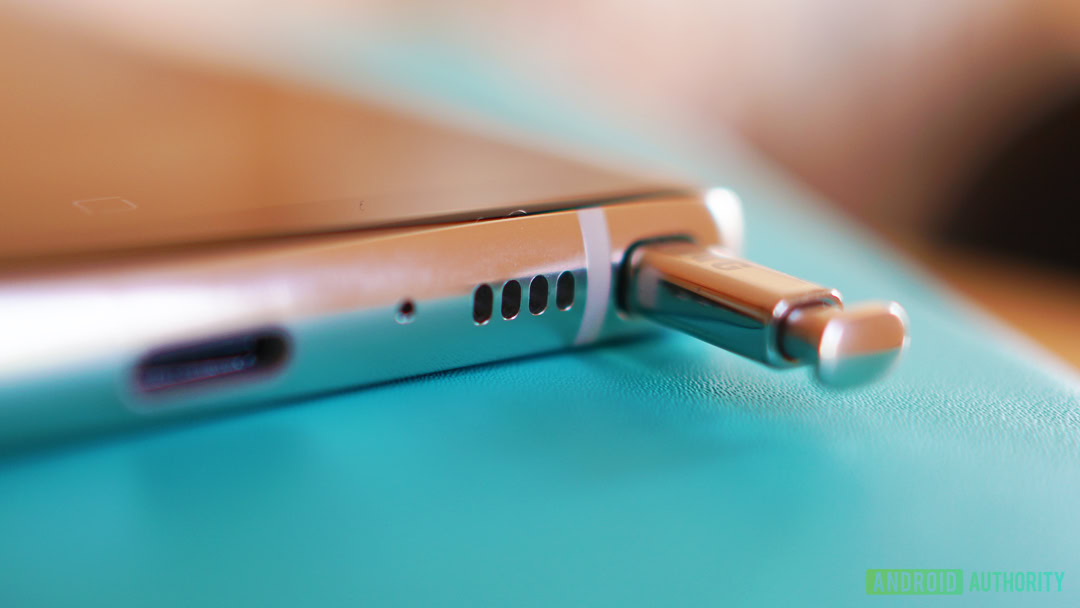
It’s worth pointing out that the iPhone is the only device that doesn’t have a fingerprint scanner. Instead, you can unlock it with the help of Face ID, which is Apple’s new facial recognition technology. Apple claims that the technology works like a charm, but there are some concerns if it will really be able to perform as advertised when faced with low-light conditions or things like sunglasses, hats, and beards.
The iPhone and both Pixels don’t have headphone jacks. The Note 8 and V30 still have them. All five devices are resistant to water and dust, with the Pixels and iPhone being IP67 rated, whereas the Note 8 and V30 have an IP68 rating.
The choice of which smartphone to opt for comes down to the differences in size and other unique features.
As you can see, all of the devices come with high-end specs, so it’s impossible to say that one is better than the other. The choice comes down to the differences in size and other unique features. The V30 is a great option for those who love listening to music and recording video. The Pixel smartphones will appeal to users looking for a stock Android experience. If you prefer iOS over Android, the iPhone X is the obvious way to go. The Note 8 is probably best for those who see themselves using the S Pen on a regular basis and like the curved display.
| Google Pixel 2 | Google Pixel 2 XL | Samsung Galaxy Note 8 | LG V30 | Apple iPhone X | |
|---|---|---|---|---|---|
Display | Google Pixel 2 5.0-inch OLED 1,920 x 1,080 resolution 441 ppi 16:9 aspect ratio | Google Pixel 2 XL 6.0-inch P-OLED 2,880 x 1,440 resolution 538 ppi 18:9 aspect ratio | Samsung Galaxy Note 8 6.3-inch AMOLED 2,960 x 1,440 resolution 521 ppi 18.5:9 aspect ratio | LG V30 6.0-inch P-OLED 2,880 x 1,440 resolution 538 ppi 18:9 aspect ratio | Apple iPhone X 5.8-inch Super AMOLED 2,436 x 1,125 resolution 458 ppi 19.5:9 aspect ratio |
Processor | Google Pixel 2 Snapdragon 835 | Google Pixel 2 XL Snapdragon 835 | Samsung Galaxy Note 8 Snapdragon 835 or Exynos 8895 | LG V30 Snapdragon 835 | Apple iPhone X Apple A11 Bionic |
GPU | Google Pixel 2 Adreno 540 | Google Pixel 2 XL Adreno 540 | Samsung Galaxy Note 8 Adreno 540 or Mali-G71 MP20 | LG V30 Adreno 540 | Apple iPhone X Apple GPU |
RAM | Google Pixel 2 4 GB | Google Pixel 2 XL 4 GB | Samsung Galaxy Note 8 6 GB | LG V30 4 GB | Apple iPhone X 3 GB |
Storage | Google Pixel 2 64/128 GB No microSD slot | Google Pixel 2 XL 64/128 GB No microSD slot | Samsung Galaxy Note 8 64/128/256 GB Expandable up to 256 GB | LG V30 64/128 GB Expandable up to 256 GB | Apple iPhone X 64/256 GB No microSD slot |
Cameras | Google Pixel 2 Rear camera: 12.2 MP sensor, 1.4 μm pixel size, and f/1.8 aperture, laser + dual pixel phase detection autofocus, OIS, EIS Front camera: 8 MP sensor, 1.4 μm pixel size, and f/2,4 aperture, fixed focus | Google Pixel 2 XL Rear camera: 12.2 MP sensor, 1.4 μm pixel size, and f/1.8 aperture, laser + dual pixel phase detection autofocus, OIS, EIS Front camera: 8 MP sensor, 1.4 μm pixel size, and f/2,4 aperture, fixed focus | Samsung Galaxy Note 8 Rear camera: 12 MP sensor f/1.7 aperture + 12 MP f/2.4 sensor with OIS & 2x zoom Front camera: 8 MP sensor, f/1.7 aperture, autofocus, 1.22 µm pixel size | LG V30 Rear camera: 16 MP sensor, f/1.6 aperture, OIS, 3-axis, laser & phase detection autofocus) + 13 MP f/1.9, LED flash Front camera: 5 MP sensor, f/2.2 aperture, 1.12 µm pixel size | Apple iPhone X Rear camera: Dual 12 MP sensor, f/1.8 & f/2.4 apertures, phase detection autofocus, OIS, 2x optical zoom, quad-LED (dual tone) flash Front camera: 7 MP, f/2.2 aperture |
Audio | Google Pixel 2 No 3.5 mm headphone jack Audio over USB Type-C | Google Pixel 2 XL No 3.5 mm headphone jack Audio over USB Type-C | Samsung Galaxy Note 8 3.5 mm headphone jack | LG V30 3.5 mm headphone jack | Apple iPhone X No 3.5 mm headphone jack Audio over USB Type-C |
Battery | Google Pixel 2 2,700 mAh Non-removable | Google Pixel 2 XL 3,520 mAh Non-removable | Samsung Galaxy Note 8 3,300 mAh Non-removable | LG V30 3,300 mAh Non-removable | Apple iPhone X 2,716 mAh Non-removable |
IP rating | Google Pixel 2 IP67 | Google Pixel 2 XL IP67 | Samsung Galaxy Note 8 IP68 | LG V30 IP68 | Apple iPhone X IP67 |
Software | Google Pixel 2 Android 8.0 Oreo | Google Pixel 2 XL Android 8.0 Oreo | Samsung Galaxy Note 8 Android 7.1.1 Nougat | LG V30 Android 7.1.2 Nougat | Apple iPhone X iOS 11.0.2 |
Colors | Google Pixel 2 Just Black, Clearly White, Kinda Blue | Google Pixel 2 XL Just Black, Black & White | Samsung Galaxy Note 8 Midnight Black, Orchid Gray, and Maple Gold, Deep Sea Blue | LG V30 Aurora Black, Cloud Silver, Moroccan Blue, and Lavender Violet | Apple iPhone X Space Gray, Silver |
Dimensions and weight | Google Pixel 2 145.7 x 69.7 x 7.8 mm 143 grams | Google Pixel 2 XL 157.9 x 76.7 x 7.9 mm 175 grams | Samsung Galaxy Note 8 162.5 x 74.8 x 8.6 mm 195 grams | LG V30 151.7 x 75.4 x 7.4 mm 158 grams | Apple iPhone X 143.6 x 70.9 x 7.7 mm 174 grams |
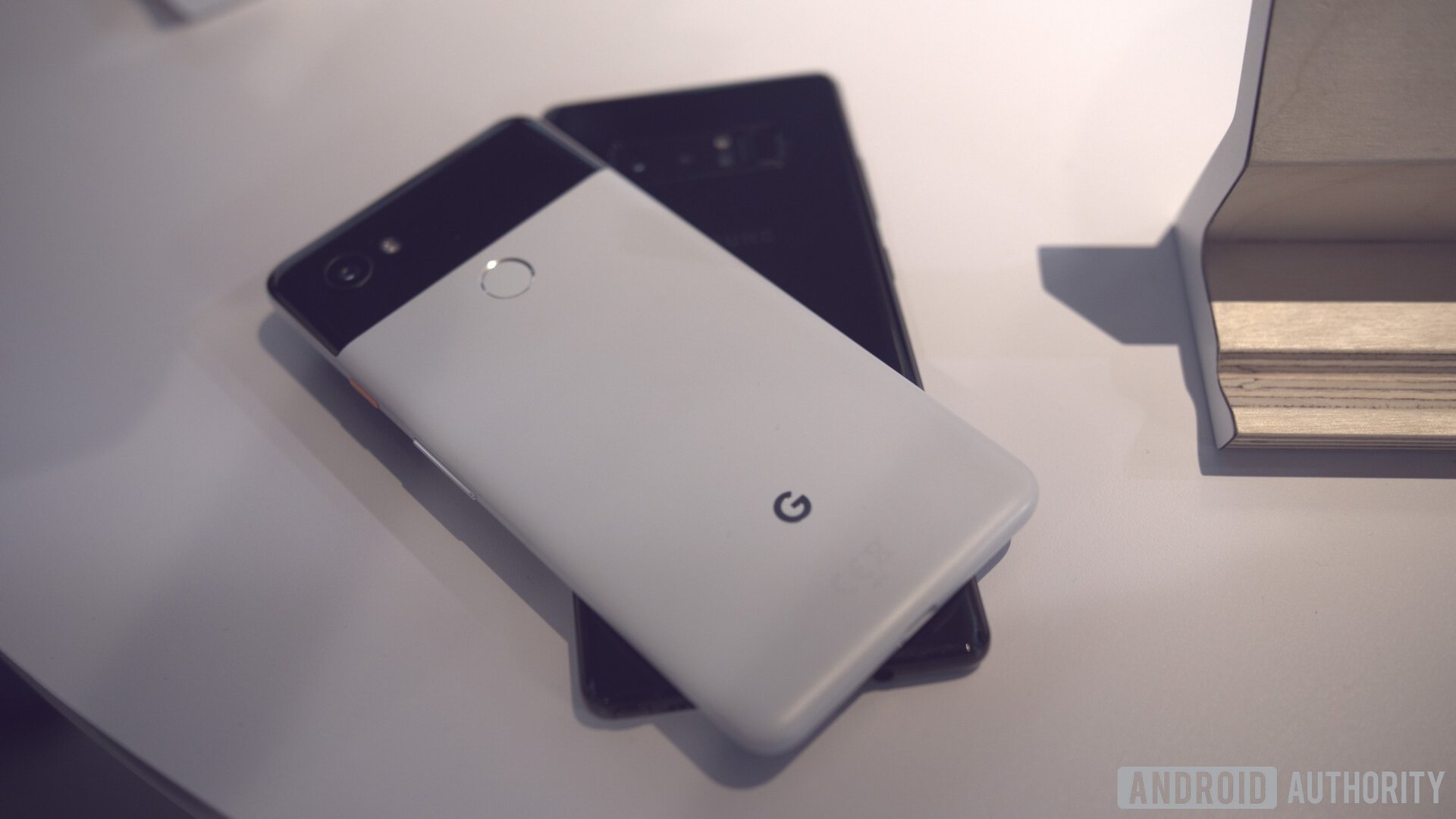
A comparison between the devices wouldn’t be complete without looking at their price tags. The Pixel smartphones are currently up for pre-order, with the smaller of the two retailing for $649 (64 GB) and $749 (128 GB). It’s bigger brother is obviously more expensive and will set you back $849 (64 GB) and $949 (128 GB).
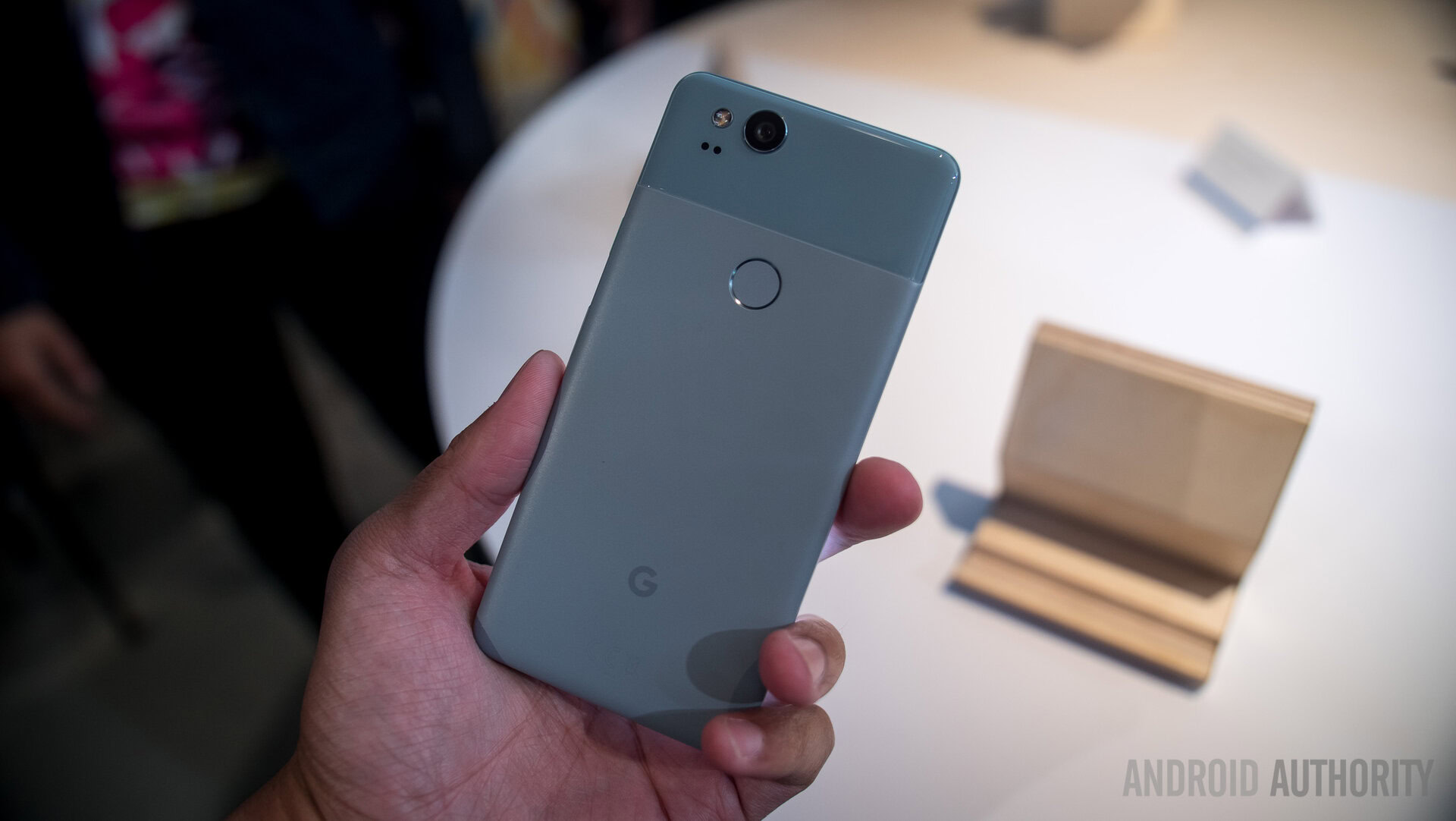
The Galaxy Note 8 only comes with 64 GB of storage in the US and is also quite expensive at $929 unlocked. However, it’s still cheaper than the iPhone X, which retails for $999 (64 GB) and $1,149 (256 GB). The LG V30, on the other hand, can be yours for around $800 and comes with 64 GB of storage.
The Pixel 2 is the most affordable option, but we have to take into consideration that it features the smallest display and battery. As expected, the iPhone has the highest price tag, with the high-end model costing over one grand.
The Pixels, as well as the iPhone, likely won’t receive a price cut or go on sale until their successors make their debut. The story might be different when it comes to the Note 8 and V30, which will likely go on sale every now and then and maybe even receive a permanent discount in a few months. We saw this happen to the Galaxy S8 series and the LG G6.
As you can see, both the Pixel 2 and Pixel 2 XL offer a lot of the same features as other flagship devices and are great alternatives to the V30, Note 8, and the iPhone X. At the same time, they are also quite different thanks to things like Active Edge and a bare-bones version of Android. The Pixel 2 might be more appropriate for those looking for a smaller and more affordable device, while its bigger brother is aimed at those looking for a phablet with a bezel-less design.
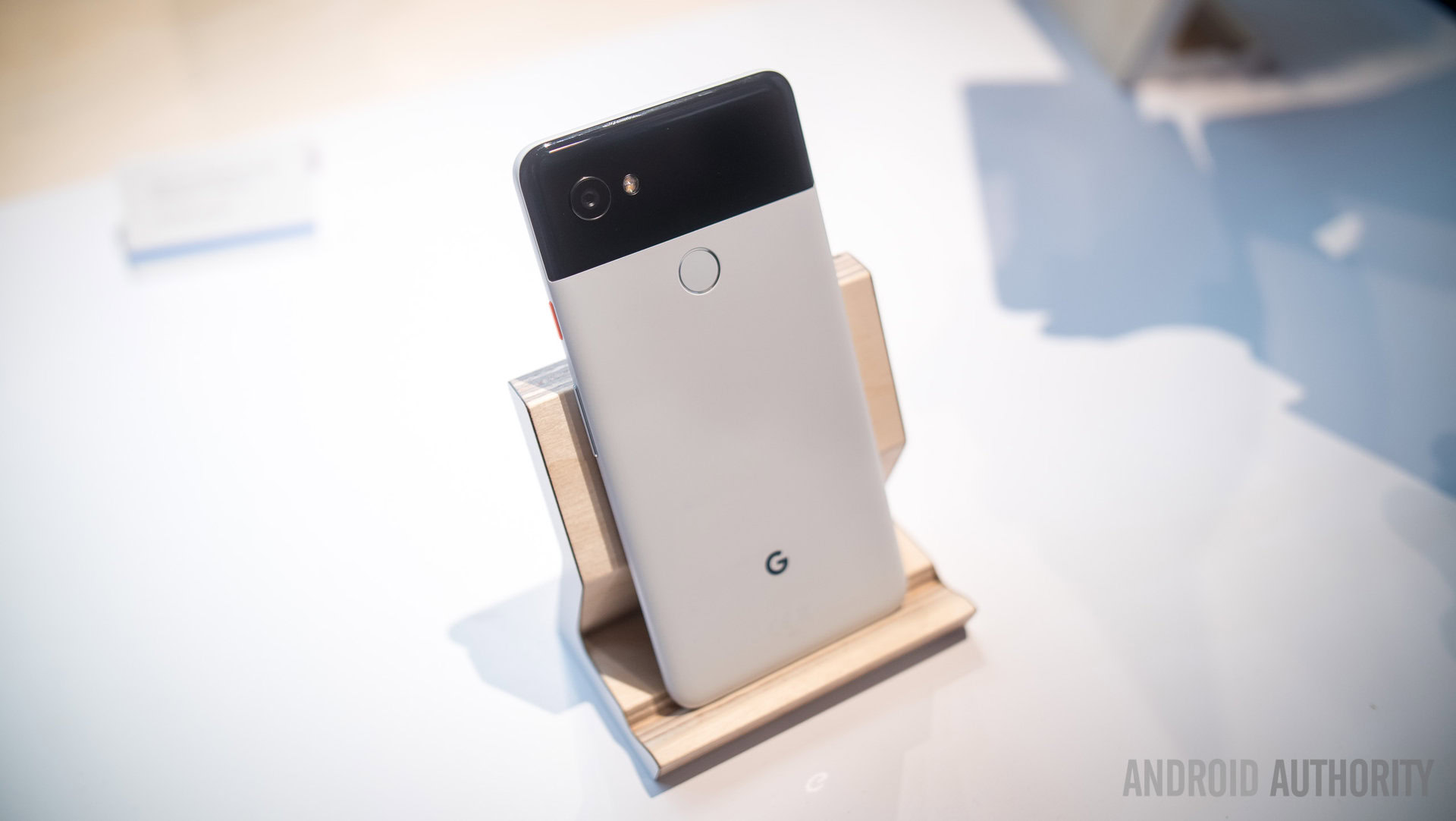
However, both have their faults. They lack a headphone jack, which both the Note 8 and V30 have. The devices also don’t support wireless charging and have a simplistic design that might not be to everyone’s liking.
The Pixels' competition isn’t perfect either, with each device having its share of drawbacks.
Of course, their competition isn’t perfect either. Each device has its share of drawbacks. The Galaxy Note 8 has a rather small battery for its size as well as a weirdly positioned fingerprint scanner. The iPhone X doesn’t even have a fingerprint scanner. The V30, on the other hand, has the home button on the back (which doubles as a fingerprint reader), that feels unnatural for some and takes time to get used to.
Based on all the differences between them, proclaiming the Pixels as better or worse than their main competitors is extremely hard to do. Some will simply love the two new devices, while others will opt for one of their rivals.
Would you consider getting either of the Pixel 2 devices over the Galaxy Note 8, LG V30, or iPhone X? Let us know in the comments.